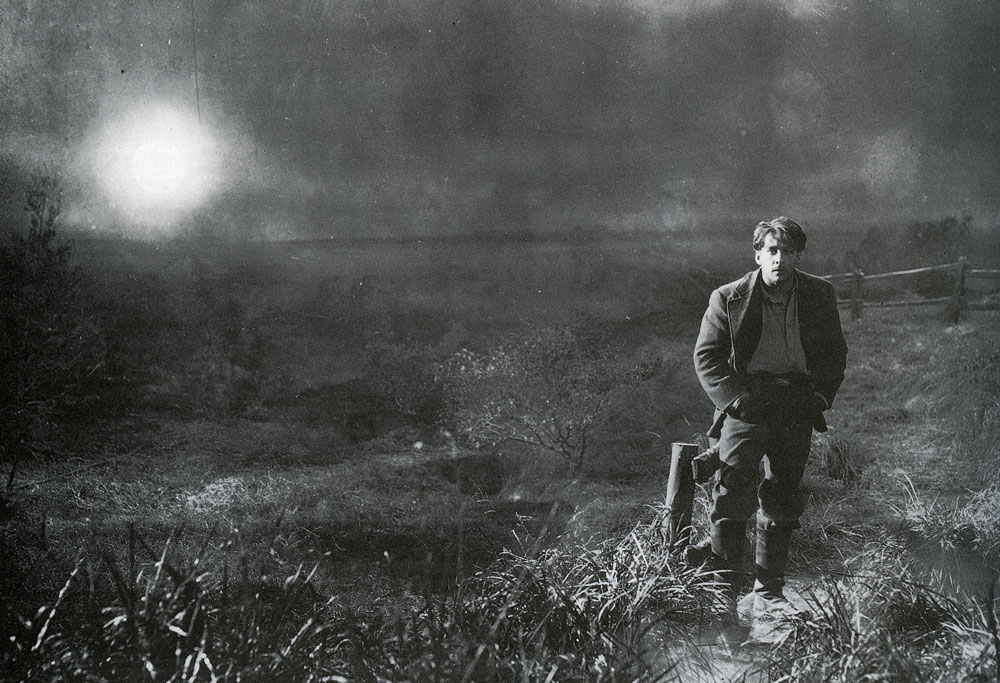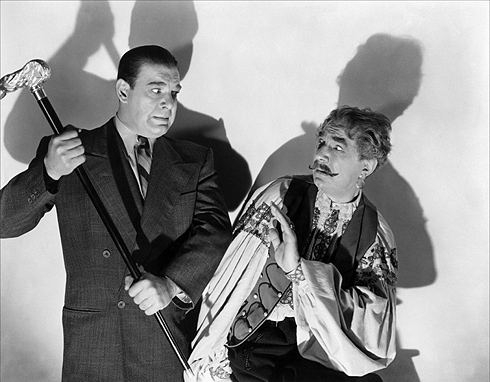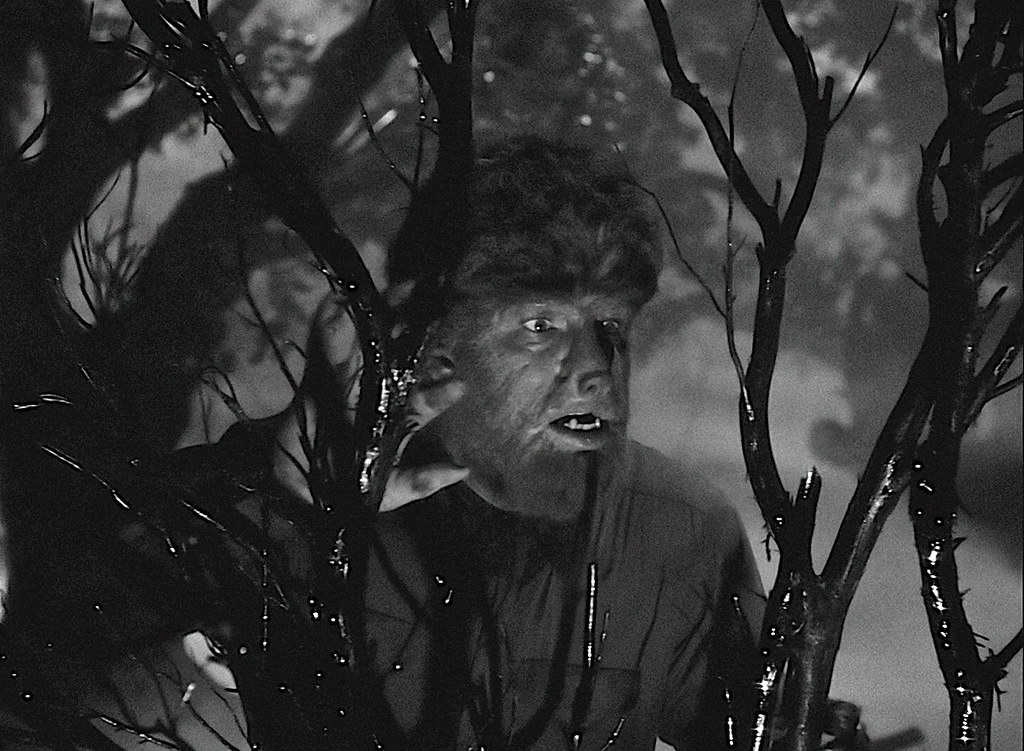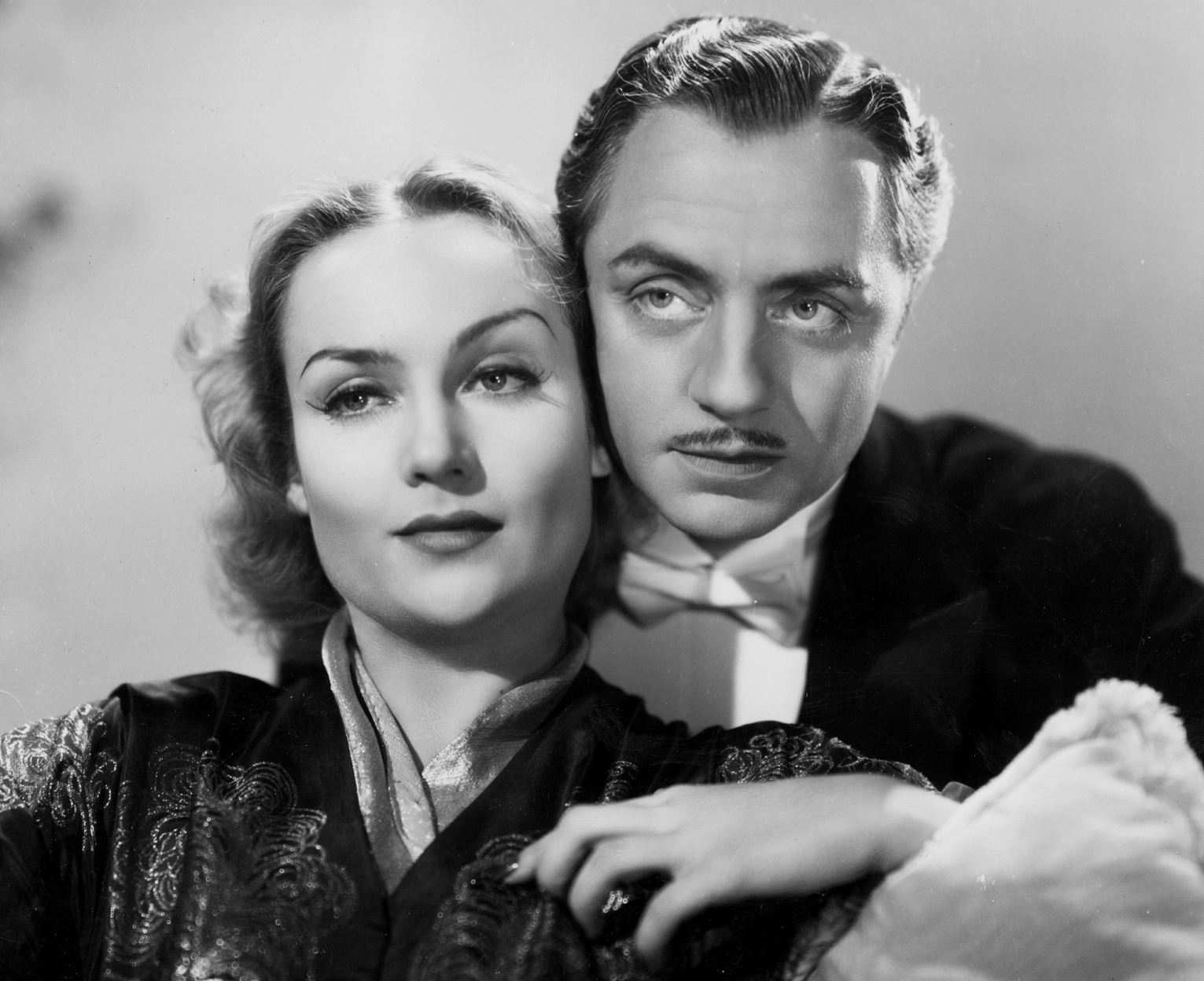Last Halloween, I talked about two of
cinema's greatest foes with a split personality Norman Bates, and Professor Jarrod. Both were frightening
characters that carried out such vicious acts in their place of business, as we
found ourselves having a bit of sympathy for them. I'd like to revisit the
topic this Halloween, only instead of being characters who completely
snapped as villains with no way to return back to sanity, I'm looking at the
characters who always struggled. The kind of characters with personalities that
are conflicted, or even at times split, like Jekyll and Hyde for instance.
WARNING: THERE WILL BE SPOILERS!

Two of these examples will include the classic Universal
Monsters, only I'm going to start out with a character who's not from a horror
film which is the man (George O'Brien) from "Sunrise: A Song of Two
Humans". The film falls under the category of a romantic melodrama. Nevertheless,
some elements in the film would qualify as being part of a thriller or a
psychological drama. The atmosphere at times looking dark and dreary. It has nerve-racking
suspense. And watching O’Brien performance of a man driven to insanity is
highly intense to watch. Plus having F.W. Murnau (the director of
"Nosferatu") in the director's chair would indeed help a lot when
bringing terror where the film needs it.

To have the audience connect with the characters, Murnau
chooses to give them no names to indicate that the events in the film could
happen to anybody. The man in the film finds himself torn with the decision to
kill his wife (Janet Gaynor). Before the events that currently take place
within the film's narrative, he and his wife were once very happy as they lived
on their farm without a single worry. As time went by, their love for each
other began to fade away. They don't hate each other, but the spark that they
once shared together is not as strong as it once was. Adding to his misery is
that he is financially struggling to keep his farm, leading him to a loss of
hope of rebuilding everything he previously had in his life.
Upon meeting a woman from the city (Margaret Livingston) who
is visiting the countryside, he finds a new hope to gain something better than
what he currently has. He is resistant at first, until she starts seducing him
with a kiss and a promise for a new life of living in the city with her. All
this excites him, because he has a chance to live with someone who gave him the
same amount of love he used to have with his wife in the glory days. As well as
living in a new environment that he's never been to before, but has heard
amazing things about. Rather than just running away with her, the woman insists
that he must kill his wife in order to sell his farm and live with her. For his
envy to live a new life with a different woman, he takes up a more sinister personality
to end his relationship with his wife by drowning her.

While looking hostile when trying to carry out his dark
deed, he finds himself torn if he should go through with it or not. He wants to
leave his old life, but he still feels remorse for her. Right from the start
when he's given the idea, he doesn't jump-on it right away, he's very hesitant
and fights back against the woman who puts these notions in his head. The
primary reason why he finds himself so conflicted is that his wife is not
exactly a bad person. She is sweet, humble, cares for him, and tries to help
him out in any way she can. Her purity is what keeps him from murdering her,
making him realize how blinded he was with excitement to be tempted to kill
someone who has done him no harm. Because of his hesitance, he fulfills
something better than what he was offered. He gets to rekindle his love with
his wife by having a romantic date in the city together. During the trip
unfortunately, he still fears giving into temptation when seeing a girl who
reminds him of the city girl when given a shave. And when noticing that a rich
man is hitting on her, believing that she will leave him or worse he threatens
him with a knife. Though he finds himself incredibly happy with her, his fears
of abandonment, and the savage side that was released from the woman he met
earlier hasn't exactly left him.

Horror is always a great place to look for characters who
struggle with their different personalities. Another famous mad scientist who
struggles between personalities is the character Dr. Jack Griffin, better known
as the Invisible Man (Claude Rains). Griffin was a struggling chemist who is
deeply in love with his employer’s daughter Flora (Gloria Stuart). Feeling that
he had nothing to offer her to be a worthy husband, he wanted to do something
great to assure finical success by making a scientific break-through. He
achieves this by finding the means to make himself invisible with the use of an
obscure drug called monocane. Until he finds a way back to becoming visible, Griffin
covers his face with bandages and dark goggles and runs off to an Inn far from
home without anyone knowing his secret. The people at the Inn grow suspicious
of him by his odd look and behaviors. When the owners have had enough of his strange habits as he is falling behind with paying rent, they try to evict him only to cause him to assault one of them forcing them to summon a police officer to arrest him for his crime. This action along with the dangerous side effects of the
monocane that can cause a person to go insane causes him to snap and take-up
his Invisible Man personality.
As the Invisible Man, he gives up using his discovery to
benefit the world by seeking for world domination as his new goal. Knowing how he
is the only person to have the power he found, he can use it to spread terror
by causing mayhem through vandalism, robberies, and murders. The fact that no
one will see him when he commits these crimes leaving people with the
uncertainty of when and where he will strike next brings him nothing but joy.
He shows no remorse when committing these crimes, he is insanely happy to watch
people scream and suffer at his mercy. Having this power makes him feel like a
god than just any other ordinary criminal. Though he is powerful, he
acknowledges that he's not immortal because Mother Nature can still cause him
to be spotted whether its water from the rain being on top of his head and shoulders,
or the footprints he leaves in the snow as he freezes in the cold (he has to go
about naked to be fully invisible). However, he is confident that he can work
against Mother Nature after making such a grand discovery. With his power and
fellow Scientist Dr. Kemp (William Harrigan) assisting him (who he forcefully
recruited) he feels that nothing should get in his way.

There is one thing that can help Griffin regain sanity, the
very person that motivated him to carry on his experiments, Flora. As soon as
he hears about Flora's arrival to Kemp's home, his wild and hostile behavior
dies down as he's reduced back to his old gentle sentimental self. Flora's
presence reminds him of why he began all this in the first place, making him
consider giving this power to the world instead of himself. With Flora bringing
him back to the kind man he was before his transformation, her Father Dr.
Cranley (Henry Travers) can reason with him by informing him about the dangers
of the drug he used. Griffin is almost willing to call off his scheme, but due
to the drugs still taking a toll on his way of thinking followed by the arrival
of the police force, he goes back to his Invisible Man personality, but not
before protecting Flora with the promise that he will return to her. He does see
her, only it is on his deathbed after being shot in both lungs. Before dying,
with the drug wearing off the last thing he tells her is his realization that
there are things that man should not meddle with, leaving the viewer with his
dead body slowly becoming visible.

Mad scientists are not the only kind of characters in the Universal Monster series that struggles between personalities. Let us not forget about how poor Larry Talbot (Lon Chaney Jr.) struggles when he became the Wolf Man. Unlike how the previous two characters developed their alternate personality through their desires, Larry was simply a regular man who just happened to be at the wrong place at the wrong time. Before Larry's incident with the wolf, he already had problems. For being away from home for so long in another country, he feels out of place, having trouble adjusting to his old surroundings as he's about to be given the estate after his brother's passing. The only thing that is keeping his feet on the ground is his love interest in Gwen (Evelyn Ankers). Ever since his encounter with the wolf he killed, he found himself descending into madness. Everybody in the village suspect him of being murderer since he owns the weapon that killed a gypsy (Bela Lugosi). And when he tries to convince others that he killed a werewolf and was bitten by one, people think he's insane since there is no evidence to prove it (down to the point where is bite mark disappears).

While the villagers point fingers at him for going off the deep end, the Mother (Maria Ouspenskaya) of the deceased gypsy tells him that he is becoming a werewolf after being bitten by one who used to be her son before he killed him. Larry would never ever think or believe about the subject of werewolves. Now that he is in an environment where people are making him feel and think that he's a murderer and a werewolf, it brings him to a paranoid state of mind where he becomes nervous around everyone, especially when he hears or sees something that's related to the symbol of his fear. When asking his Father (Claude Rains) about his fear, he tells him that there is good and evil in every man's soul, where in his case his evil has taken the form of a wolf. People tend to simply judge life simply what they see is good or bad. Considering how everybody has a different point of view, the more a person dives deeper into the topic of trying to understand every side the less sure of an answer shall be found. He closes this conversation by informing him that "anything can happen to a man in his own mind".

While the villagers point fingers at him for going off the deep end, the Mother (Maria Ouspenskaya) of the deceased gypsy tells him that he is becoming a werewolf after being bitten by one who used to be her son before he killed him. Larry would never ever think or believe about the subject of werewolves. Now that he is in an environment where people are making him feel and think that he's a murderer and a werewolf, it brings him to a paranoid state of mind where he becomes nervous around everyone, especially when he hears or sees something that's related to the symbol of his fear. When asking his Father (Claude Rains) about his fear, he tells him that there is good and evil in every man's soul, where in his case his evil has taken the form of a wolf. People tend to simply judge life simply what they see is good or bad. Considering how everybody has a different point of view, the more a person dives deeper into the topic of trying to understand every side the less sure of an answer shall be found. He closes this conversation by informing him that "anything can happen to a man in his own mind".

Larry discovers the truth after waking up from his second transformation,
as the Wolf Man. When becoming the Wolf Man, Larry has no control of his
actions now that his inner demons have taken control of his alternate
personality. Therefore, he will go on attacking anybody he sees, especially
those who are marked for death when he sees the pentagram appear in his or her
hand. To avoid hurting anyone with his other personality, he tries to run and
hide from those who want to help him, going as far to begging his Father to
strap him in a chair and lock him up in his room. He knows he can't save
himself from this curse, but he can try to save others from him. Never does
Larry find any moments of peace from his struggle with his split personality
until he suffers from the same fate that the Gypsy did, only this time it is at
the hands of his own father instead of a stranger.
Hopefully next year I will find time to write more than one horror related and essay for October. Until then, Happy Halloween!











